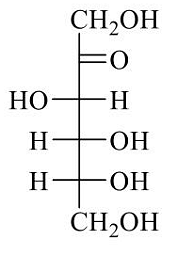The reaction(s) in which inversion of configuration occur(s) is(are)

The reaction(s) in which inversion of configuration occur(s) is(are) 
Show Hint
{Neighboring-group participation} (acyloxonium/thiiranium/halonium) often leads to backside opening \(⇒\) inversion at the attacked carbon.
{Rearrangements} like Hofmann and Baeyer–Villiger are concerted migrations \(⇒\) {retention} of configuration at the migrating center.
Solution and Explanation
Ph3P/DEAD with a carboxylic acid converts an alcohol R*–OH into the corresponding ester R*–O2CR' via an SN2 displacement of the O–PPh3 activated intermediate. The chiral center at carbon undergoes a single backside attack ⇒ Walden inversion.
Step 2: Option (B) — Anchimeric assistance (acyloxonium) under heat.
On heating, the neighboring acetate participates to form a cyclic acyloxonium intermediate; subsequent intramolecular/backside attack (or acetate capture) occurs SN2-like. The carbon bearing the leaving group is attacked from the opposite face ⇒ inversion at that stereocenter. (This is the classic neighboring-group participation in constrained bicyclic/allylic systems.)
Step 3: Option (C) — Hofmann rearrangement.
NaOBr converts an amide to a C-1 shorter amine via N-bromoamide, rearrangement, and isocyanate. Stereochemical information at a migrating alpha-carbon (if present) is retained through the concerted migration; no inversion is involved.
Step 4: Option (D) — Baeyer–Villiger oxidation.
Peracid inserts an oxygen adjacent to a carbonyl with migration of one substituent. The migrating stereocenter (if any) migrates with retention (concerted rearrangement), not inversion.
Therefore, only (A) and (B) involve inversion of configuration.
Top Questions on Relative stereochemistry in compounds having more than one stereogenic centre
- Fischer presentation of D-(-)-fructose is given below.

The correct structure of α-L-(+)-fructofuranose is- GATE CY - 2024
- Organic Chemistry
- Relative stereochemistry in compounds having more than one stereogenic centre
- The major products X and Y in the following reaction sequence are

- GATE CY - 2024
- Organic Chemistry
- Relative stereochemistry in compounds having more than one stereogenic centre
- The correct statement(s) for decalin is (are)
- GATE CY - 2024
- Organic Chemistry
- Relative stereochemistry in compounds having more than one stereogenic centre
The acetolysis product(s) of the given reaction (solvolysis of the benzylic tosylate in AcOH) is(are)

- GATE CY - 2023
- Organic Chemistry
- Relative stereochemistry in compounds having more than one stereogenic centre
The topicity relationship of \(H_a\) and \(H_b\) in X, Y and Z (as drawn in the figure) are, respectively,

- GATE CY - 2023
- Organic Chemistry
- Relative stereochemistry in compounds having more than one stereogenic centre
Questions Asked in GATE CY exam
In the given figure, the numbers associated with the rectangle, triangle, and ellipse are 1, 2, and 3, respectively. Which one among the given options is the most appropriate combination of \( P \), \( Q \), and \( R \)?

A regular dodecagon (12-sided regular polygon) is inscribed in a circle of radius \( r \) cm as shown in the figure. The side of the dodecagon is \( d \) cm. All the triangles (numbered 1 to 12 in the figure) are used to form squares of side \( r \) cm, and each numbered triangle is used only once to form a square. The number of squares that can be formed and the number of triangles required to form each square, respectively, are:

The number of patients per shift (X) consulting Dr. Gita in her past 100 shifts is shown in the figure. If the amount she earns is ₹1000(X - 0.2), what is the average amount (in ₹) she has earned per shift in the past 100 shifts?

The Lineweaver-Burk plot for an enzyme obeying the Michaelis-Menten mechanism is given below.

The slope of the line is \(0.36 \times 10^2\) s, and the y-intercept is \(1.20\) mol\(^{-1}\) L s. The value of the Michaelis constant (\(K_M\)) is ________ \( \times 10^{-3} \) mol L\(^{-1}\) (in integer). [Note: \(v\) is the initial rate, and \([S]_0\) is the substrate concentration]
- GATE CY - 2025
- General Chemistry
Consider a Carnot engine with a hot source kept at 500 K. From the hot source, 100 J of energy (heat) is withdrawn at 500 K. The cold sink is kept at 300 K. The efficiency of the Carnot engine is ___________ (rounded off to one decimal place).
- GATE CY - 2025
- General Chemistry